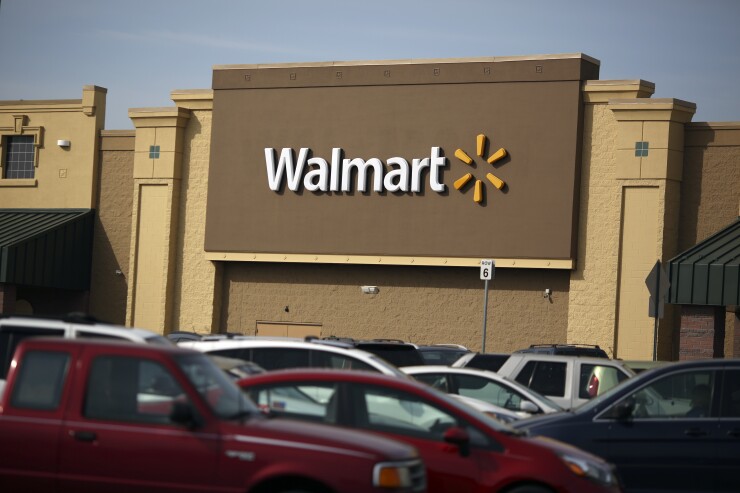Walmart and Green Dot have added a high-yield savings feature to MoneyCard, their general-purpose reloadable debit card and app. In so doing, they have turned this offering into what is effectively a bank account.
“The feature functionality is on par with what you would get from any other digital bank account these days,” said Mike Keeslar, general manager of consumer products at Green Dot. “And that was really the guiding light for us and for Walmart as we thought about ... what customers need today and how they're using banking instruments.”

Walmart and Green Dot, the issuing bank and program manager for Walmart MoneyCard, first rolled out the product in 2006. The two companies signed an agreement in January that extends their relationship for another seven years.
Offering a 2% interest rate in an ultralow-rate environment is an unusual choice. Many banks are cutting their high-yield savings rates.
“When we went into ideation with Walmart on this program, interest rates were much higher,” Keeslar said. “But we feel like this is the right thing to do by the customer, and we are going to stand by the 2%.”
The motivation to do this now, he said, was the lack of savings broadly in this country. And the card has helped the company build customer relationships that last for many years and can become profitable over the long run, he said.
MoneyCard lets families create shared accounts. It provides free cash reloads and early access to direct deposits. A “vault” lets people save money in the hope of getting prizes. There are cash-back rewards.
“All these things are geared toward making this a primary banking instrument for the MoneyCard customer,” Keeslar said. “This is not something that is going to be a huge moneymaker, but we believe it's the right thing to do for the customer and helps people in their savings journeys.”
The product in some ways resembles the offerings of challenger banks.
“We have a richer, more fulsome set of offerings than you would get from a similarly situated neobank,” Keeslar said. “Neobanks play around the edges on some budgeting tools, and they have early direct deposit like we do. But other than that, it's a pretty limited offering.”
The typical MoneyCard user is underbanked, with a household income of less than $75,000.
Yet as Walmart and Green Dot have expanded MoneyCard out into an app and online product (walmartmoneycard.com), they’ve begun to attract slightly wealthier clientele.
“Technology has become more ubiquitous and all types of customers, whether they’re unbanked, underbanked or traditionally banked, are looking for things like the ability to access their finances from a mobile app, and looking for more full features,” Keeslar said. “We have a huge installed base of active users, and a lot of those customers use our products like their bank account.”
For example, many users received their first round of government stimulus in their MoneyCard account, because that is where they receive their federal tax refunds.





